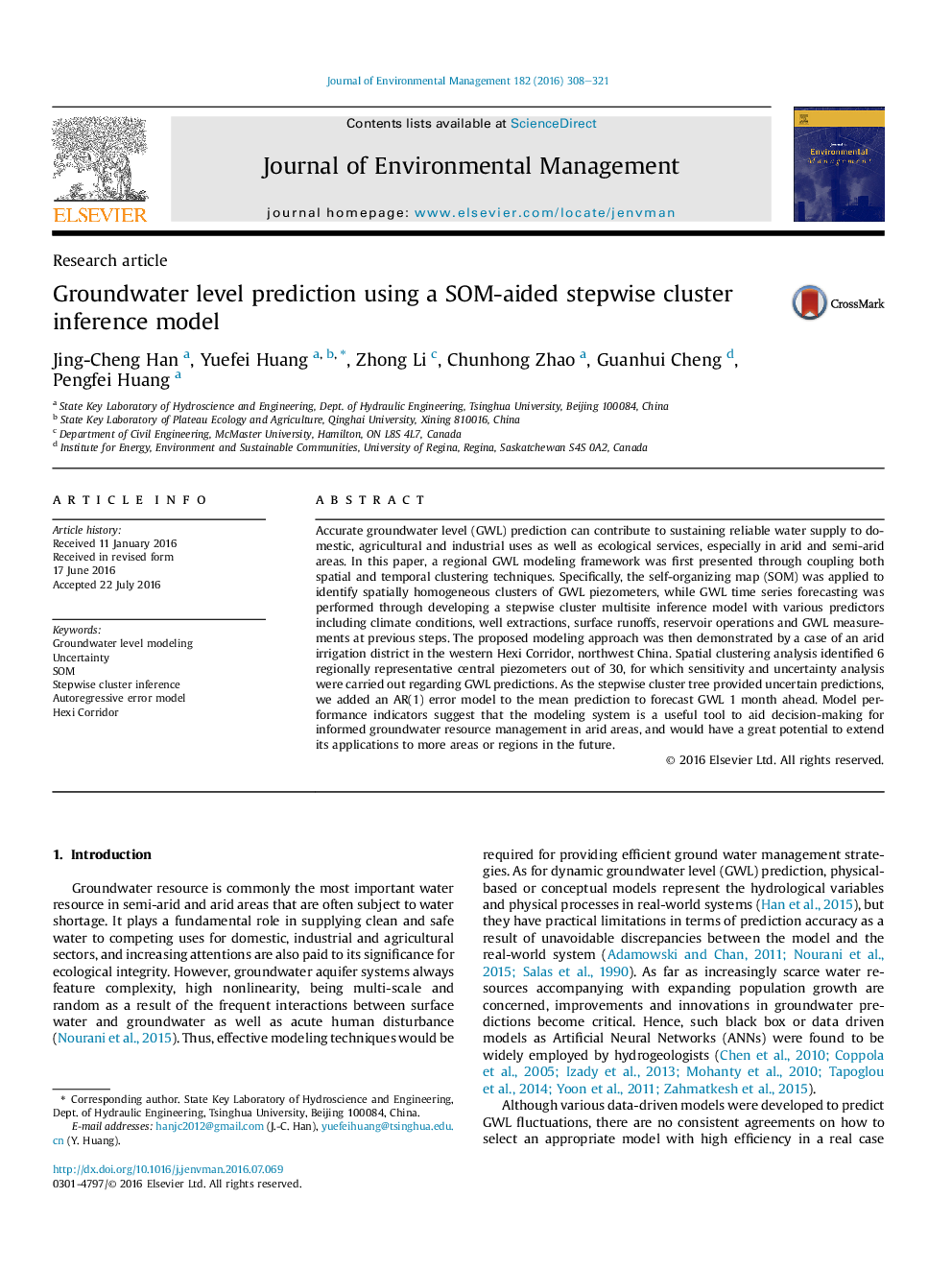| Article ID | Journal | Published Year | Pages | File Type |
|---|---|---|---|---|
| 7479112 | Journal of Environmental Management | 2016 | 14 Pages |
Abstract
Accurate groundwater level (GWL) prediction can contribute to sustaining reliable water supply to domestic, agricultural and industrial uses as well as ecological services, especially in arid and semi-arid areas. In this paper, a regional GWL modeling framework was first presented through coupling both spatial and temporal clustering techniques. Specifically, the self-organizing map (SOM) was applied to identify spatially homogeneous clusters of GWL piezometers, while GWL time series forecasting was performed through developing a stepwise cluster multisite inference model with various predictors including climate conditions, well extractions, surface runoffs, reservoir operations and GWL measurements at previous steps. The proposed modeling approach was then demonstrated by a case of an arid irrigation district in the western Hexi Corridor, northwest China. Spatial clustering analysis identified 6 regionally representative central piezometers out of 30, for which sensitivity and uncertainty analysis were carried out regarding GWL predictions. As the stepwise cluster tree provided uncertain predictions, we added an AR(1) error model to the mean prediction to forecast GWL 1 month ahead. Model performance indicators suggest that the modeling system is a useful tool to aid decision-making for informed groundwater resource management in arid areas, and would have a great potential to extend its applications to more areas or regions in the future.
Keywords
Related Topics
Physical Sciences and Engineering
Energy
Renewable Energy, Sustainability and the Environment
Authors
Jing-Cheng Han, Yuefei Huang, Zhong Li, Chunhong Zhao, Guanhui Cheng, Pengfei Huang,
